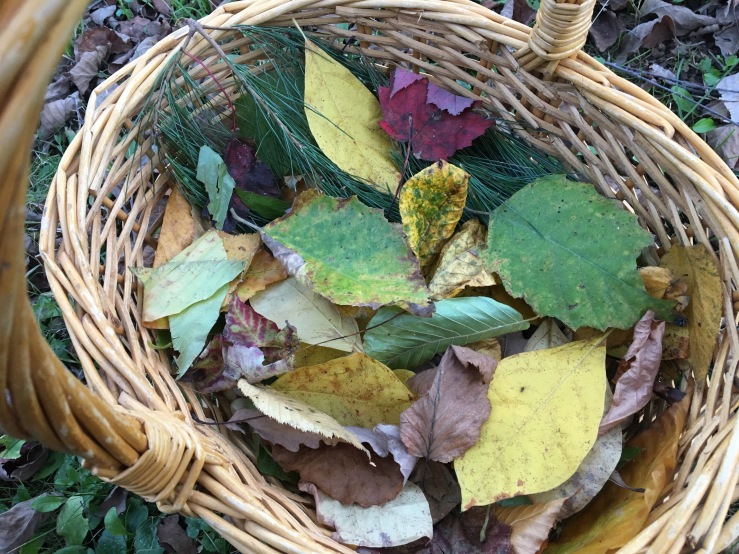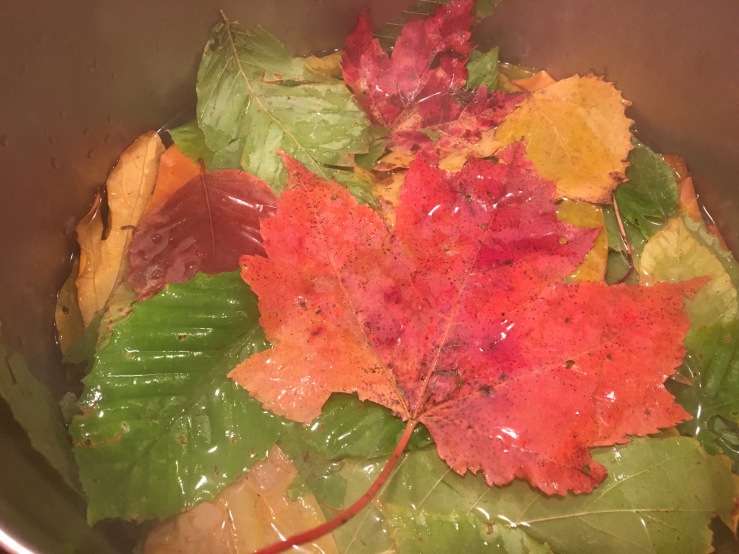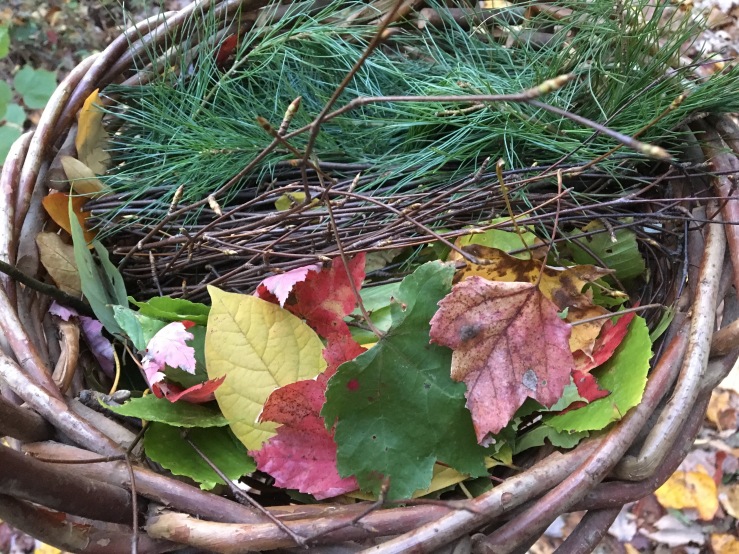
This is that rare preparation that sounds as poetic as it tastes. But between making a success out of it and a shambles there lies a very thin line.
If you just grab a bunch of random leaves from the forest floor and bring to the boil (Latin bullire, hence “bouillon”), you will certainly achieve some kind of a broth from them. But its flavor will be questionable. At best, it’s a roll of the dice that might make you lucky. At worst, it’s your stomach that is tumbling.
Leaves fall at different times. They contain many different flavors and elements that age and decay in different fashion. They aren’t all “edible,” but the ones you use should all be non-toxic. A handful of trees bear leaves that should be avoided (eucalyptus, yew, certain fabaceae family trees). Every leaf that makes its way into my broths is non-toxic, and every tree type mentioned below is broadly “edible” in my area. As always, your local species are the ones you need to look into.
I eat a lot of tree leaves. They don’t remain edible for very long, usually only a couple of weeks, but within that time frame things like beech and basswood leaves have become some of my favorite spring greens. The leaves of fruiting and non-fruiting Morus alba (White Mulberry) are another favorite, a sweet leaf more mild than cultivated lettuce once briefly boiled. Maple leaves can be or become bitter quite quickly but in their earliest incarnations most are mild enough to make a tempura or mead from, or boil and add to a salad.
I also use a lot of tree leaves. Oak leaves in particular, both for their tannins to stiffen a pickle a la grape leaves, and for their bite in brews and forest infusions. Those maple leaves that have become sharper are fine in small quantities in these same preparations. Dried black walnut (and by extension hickory and walnut leaves) are a traditional bittering agent, adding astringency and woody richness to alcohol, honey, or vinegar. As they age, edible or non-toxic tree leaves change in character, appearance and flavor. These intriguing elements can be used in the kitchen, but only once you have ascertained which leaves are safe to experiment with.

There is no substitution here, not for ingredients and not for experience. Learn which trees grow locally, and learn which ones are generally safe for food use. Taste and use the ones that are safe. Experiment with them – whether it be in a salad or a vinegar. Roll the dice, but set your own limits. Nibble before you bite, and bite before you swallow.
To make a broth of fallen leaves, you should worry more about proportion than volume. A good place to start is a few handfuls in the bottom of your stock pot, maybe about 6-8 cups of loosely packed leaves to about 4 quarts of water. Start small at first–what do you have to lose? My first broths of fallen leaves were a handful in a saucepan, filled with water and just simmered until flavorful, then drained and immediately used in miso soup, or a noodle dish, or mushroom soup. Or simply drunk, almost like tea, or better yet bone broth, with perhaps a pinch or three of sea or seasoned salt.
While I approached it very tentatively at first, you can be a bit bolder. I would suggest that for starters you can make a stock pot full of this broth, as long as you follow three simple rules :
1) pick clean, newly fallen leaves or tug leaves which are nearly ready to fall from the lower branches. its more poetic to gather the cast off leaves, but rule no.2 is more important than poetry – generally the milder leaves (mulberry, beech, linden) are later to fall. Carefully wash and sort your leaves, and strain the finished broth through a clean dishtowel or cheesecloth to filter out any noise, including the resinous issue which exudes from all the conifers.
2) use the proportions listed below to keep your broth within the bounds of reason. Feel free to deviate from them, but at your own peril. Adding a few more oak leaves can mean a wide shift in the dryness, aroma, and taste of your final broth.
OF THESE LEAVES, USE
50 % mild, edible leaves (beech, linden/basswood, white mulberry, birch, sumac, some viburnums)
10 % bitter, astringent or strong leaves (oak, hickory, black walnut)
20 % aromatic, seasoning leaves (spicebush, sassafras, maple)
20 % coniferous needles or branches (pine, spruce, hemlock, fir)
3) taste your broth, and pull it when it is to your liking. Don’t allow the leaves to sit and linger once you’ve achieved the flavor you want, or it will become much more woody and bitter. Of course, this can work too–and is a great basis for beers or vinegars. But we will discuss that elsewhere. Before all else, a broth should be sippable, soothing, nourishing. Something you can reach for when at your worst. Remember, this is a base. It should be flavorful but restrained enough to be a background for other flavors.

It occurs to me that this is essentially a very open-ended recipe, not only in terms of how it is described here, but in how it could mutate or evolve. I have made over the years many things that exist somewhere in-between this “broth” and a wild tea, concoctions which have been not only cooking medium or tea but also brine for marinating or pickling other foods, and so on. To cut off at the pass the most obvious notions, I would suggest that any wild tea plant could be added, along with such as rosehips, wild spices such as pushki, juniper or spicebush, spicebush or sweet birch bark, rubus spp. leaves, goldenrod flowers, bayberry leaf, und so weiter.
As for using this, I have found broth of fallen leaves to be very versatile, I have made everything from strong, pho-style noodle dishes to delicate sipping, restorative broths with just a few dried mushrooms or seaweed strips, to hearty minestrone and creamy turkey stews with it. In the end, the flavor of the final product will dictate its use best. This isn’t a broth patched from scraps, but a good reason to go out in the woods in itself. And let the results of your careful experimentation be your guide.